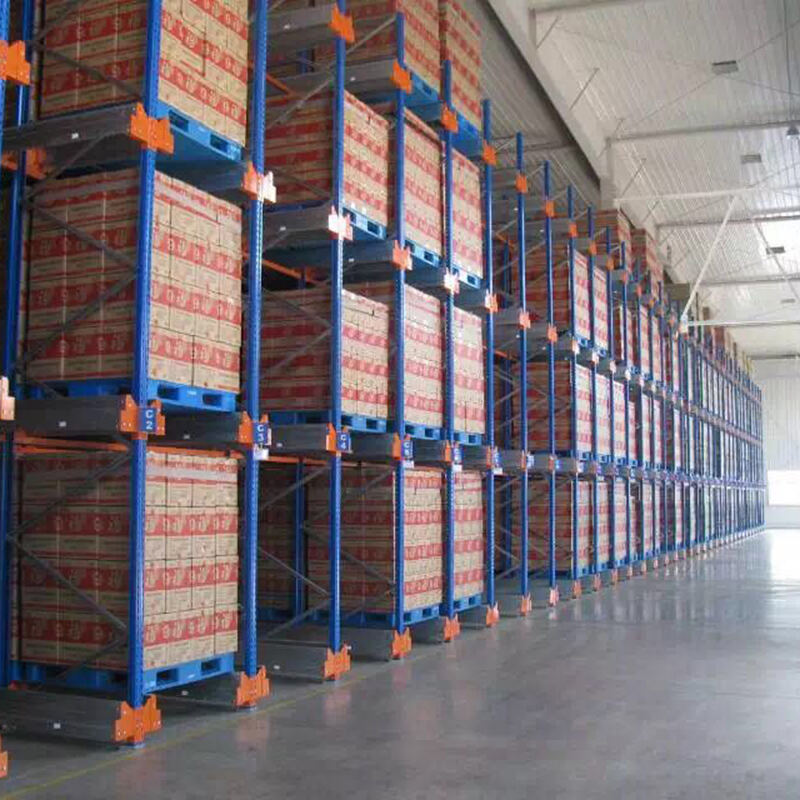Maximizing Storage Density with Advanced Racking Solutions
Warehouse efficiency remains a critical factor in today's competitive logistics landscape. Drive in pallet racks have emerged as a game-changing storage solution that revolutionizes how businesses utilize their warehouse space. These innovative racking systems enable companies to maximize their storage capacity while maintaining smooth operational flow, offering up to 75% more storage density compared to traditional selective racking methods.
Modern warehouses face increasing pressure to store more inventory in limited spaces while ensuring quick access and maintaining cost-effectiveness. Drive in pallet racks address these challenges by providing a high-density storage solution that eliminates unnecessary aisles and optimizes vertical space utilization. This comprehensive guide explores the benefits, implementation strategies, and best practices for incorporating drive in pallet racks into your warehouse operations.
Understanding Drive In Racking Systems
Core Components and Design Features
Drive in pallet racks consist of several key components working together to create a robust storage solution. The system includes vertical frames, horizontal beams, rail supports, and guide rails that allow forklifts to enter the rack structure directly. This design eliminates the need for multiple aisles, as forklifts can drive directly into the racking system to access pallets stored several positions deep.
The structural integrity of drive in pallet racks is enhanced through reinforced uprights and specially designed impact protection features. Load rails run the depth of the system, supporting pallets on both sides and ensuring secure storage even in deep-lane configurations. The entire system is engineered to maximize cubic space utilization while maintaining structural stability and operational safety.
Operational Principles and Functionality
The operational concept behind drive in pallet racks is straightforward yet highly effective. Forklifts enter the racking structure through designated entry points, following guide rails that ensure precise movement and pallet placement. This system operates on a last-in-first-out (LIFO) principle, making it particularly suitable for bulk storage of homogeneous products with consistent turnover rates.
The depth of drive in pallet racks can be customized to accommodate varying inventory levels and product characteristics. Typical configurations range from two to ten pallets deep, though deeper arrangements are possible based on specific warehouse requirements. This flexibility allows businesses to optimize their storage solution according to their unique operational needs.
Benefits and Advantages of Drive In Racking
Space Optimization and Storage Density
One of the primary advantages of drive in pallet racks is their exceptional space utilization capability. By eliminating multiple access aisles, these systems can increase storage capacity by up to 75% compared to traditional selective racking. This dramatic improvement in storage density makes drive in pallet racks particularly valuable in facilities with high real estate costs or limited expansion possibilities.
The vertical design of drive in pallet racks also maximizes ceiling height utilization, allowing warehouses to take full advantage of their vertical space. This three-dimensional optimization approach ensures that every cubic foot of warehouse space contributes to storage capacity, significantly improving overall space efficiency.
Cost Efficiency and ROI
Implementing drive in pallet racks can lead to substantial cost savings in various areas. The increased storage density reduces the need for warehouse expansion or additional facility leasing, resulting in significant real estate cost savings. The system's efficient design also minimizes the required number of forklifts and operators, leading to reduced equipment and labor costs.
The initial investment in drive in pallet racks typically delivers a strong return on investment through improved operational efficiency and reduced overhead costs. The durability and low maintenance requirements of these systems further contribute to their long-term cost-effectiveness, making them an economically sound choice for warehouses seeking to optimize their storage solutions.

Implementation Strategies and Best Practices
Planning and Design Considerations
Successful implementation of drive in pallet racks begins with careful planning and design consideration. Factors such as product characteristics, inventory turnover rates, and operational requirements must be thoroughly analyzed to determine the optimal configuration. The layout should account for traffic flow patterns, forklift specifications, and safety requirements while maximizing storage efficiency.
Working with experienced suppliers and engineers ensures that the system design meets both current needs and future growth potential. Consideration should also be given to factors such as floor loading capacity, ceiling height constraints, and fire safety regulations during the planning phase.
Safety Measures and Maintenance Protocols
Safety is paramount in drive in pallet rack operations. Regular inspection and maintenance protocols should be established to ensure system integrity and operational safety. This includes checking structural components, guide rails, and impact protection features for signs of wear or damage.
Training programs for forklift operators should emphasize proper entry and exit procedures, load placement techniques, and safety protocols specific to drive in racking systems. Clear operational guidelines and regular safety audits help maintain high safety standards while maximizing system efficiency.
Frequently Asked Questions
What types of products are best suited for drive in pallet racks?
Drive in pallet racks are ideal for homogeneous products with consistent turnover rates and longer storage periods. They work exceptionally well for bulk storage of seasonal items, production overruns, and products with multiple pallets per SKU. The system is particularly effective for items that don't require strict FIFO (First-In-First-Out) inventory management.
How do drive in pallet racks compare to drive-through racks?
While similar in concept, drive in pallet racks operate on a LIFO basis with access from one side, while drive-through racks allow access from both ends, enabling FIFO inventory management. Drive in systems typically offer higher storage density but less inventory rotation flexibility compared to drive-through configurations.
What maintenance is required for drive in pallet racks?
Regular maintenance includes inspecting structural components, guide rails, and impact protection features for damage or wear. It's recommended to conduct monthly visual inspections and annual professional assessments. Prompt repair of any damaged components and regular cleaning of guide rails ensure optimal system performance and safety.

